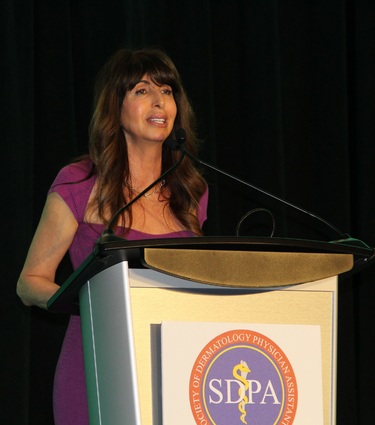Managing the Aging Process through Regenerative Dermatology
Dr. Glynis Ablon, UCLA associate clinical professor, delivered an enlightening lecture informing dermatology PAs about treating and managing the aging process through regenerative medicine. To be specific, regenerative medicine is defined as a method to replace tissue or organs that have been damaged by disease, trauma or congenital issues. Tools used to realize these outcomes include tissue engineering, cellular therapies, medical devices and artificial organs.
Coverage: SDPA 20th Annual Fall Dermatology Conference Nov. 17-20, 2022, in Miami
In reviewing the use of stem cells in regenerative medicine, Dr. Ablon likens them to “military generals in the army” that read their surroundings and decide what actions need to be accomplished with the ability to differentiate based on environment. There are numerous regulatory considerations when it comes to the use of human cells as regulated by the FDA. Placental derived stem cells are ethically problem free and easily procured and have been used in topical skin care products, for example in the product Calecim®. Dr. Ablon illustrated a hair growth treatment derived from mesenchymal bone marrow stem cells with a home hair system and an in-office treatment that revealed impressive results for hair regeneration at eight weeks.
Lastly, Dr. Ablon touched on the use of platelet rich plasma (PRP) and platelet rich fibrin (PRF). PRF is the clotted form of PRP that does not use an anticoagulant and is spun at lower speed. PRF is not a filler, can be more painful than PRP and more difficult to inject. She cautioned the importance of ensuring the medical devices used for PRP/PRF are FDA approved. Positive case presentations with the use of PRP and PRF for hair loss were reviewed. Dr. Ablon also illustrated the use of PRP with microneedling for scarring. Additional topics of review included recombinant DNA technology and exosomes. Dr. Ablon declared “exosomes are the future of regenerative medicine,” though points to a long manufacturing and testing process.
Byline: Sarah B.W. Patton, PA-C
Pictured: Glynis Ablon, MD, FAAD, Ablon Skin Institute and Research Center
